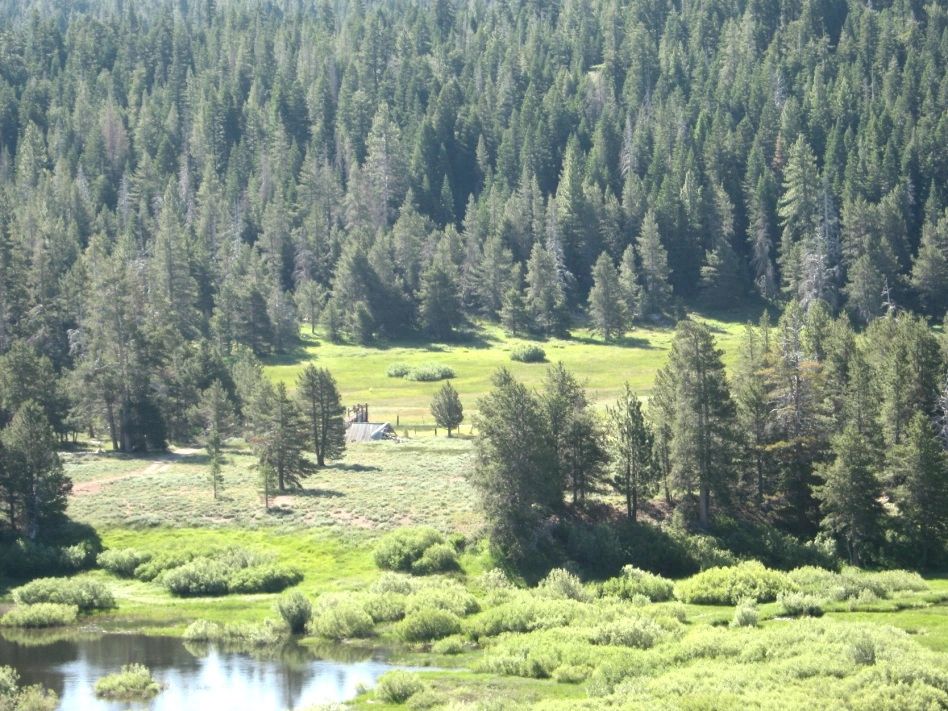
Perazzo Meadows and HG
Perazzo Meadows and HG-QLG takes Gawkers to look at Wildflowers 072711
The Sierraville Ranger Station held a Herger-Feinstein Quincy Library Group tour to see some work being done at Perazzo Meadows, some fuel reduction along Treasure Mountain Road and the Tracer Timber Sale. About 20 people attended, mostly federal employees but also some county employees and several busybodies including members of the press.

The jewel in the crown of the tour is Perazzo Meadows, a narrow valley in the high country between Sierraville and Nevada County. Perazzo provides stunning scenery.
The watershed was changed by donkey engine logging, by diversion, by roads and through attempts to drain the wetlands to provide more grazing for dairy cattle. The industry of those early days had a consequence they couldn’t have known, as the effect was to dry the meadow as the cuts eroded.
The Forest Service, in conjunction with a number of local players and using Recovery Act or “Stimulus Funds” has been working on the project for about ten years. At the heart is the “plug and pond” method of interrupting the breakneck downhill racing of the water to return it to a more “sinuous” or snake like flow. The idea is to slow the water and so stop erosion of the Little Truckee stream channel and to raise the water level so the entire meadow is wet again.

The plan is not fool proof, some dams have blown out and there still might be unintended consequences down the road, just as there were for the last humans who tampered with the watershed, but there is still strong evidence the project is working. Areas which were sagebrush, a dry land plant, are now reverting back to grasslands and wildflowers. Pine trees, interlopers on the meadow system, are dying off, their dry trunks providing lookout stations for some of the many, many birds the wetlands attract.
There has been some resistance: users of the Sierra Valley Water Company fear the ponds might be retaining water that they need for their agricultural uses; use goes back to the 1870s. Their diversion is one of only a few which take water from one watershed (Truckee) to another (Feather River). The diversion is only allowed for a few months of the year, and only if water levels are high enough.

District Ranger Quentin Youngblood is conducting a 5 year water monitoring project which will provide data about the flows to the diversion. He is not going to proceed with the project unless it can be shown that the water rights are protected.
There are other legal issues with the plan. The Lahonton Cutthroat trout is native to those waters, and there is a desire to plant them there again, but problems might occur. Since the fish is protected, if some escape the creek into the diversion, there could be Department of Fish and Game problems for the landowners where the trout appears. Thanks to the way threatened and endangered species are handled, few landowners want anything listed on their lands.

It is clear the meadow is recovering, and that, at least for now, the plan is working.
The tour also saw some thinning along Treasure Mountain Road. Below is one of the machines used to “grapple pile” small trees.

If you haven’t visited the Perazzo Meadows, it’s worth a trip. Take Highway 89 to Little Truckee Summit, and head West. Bring water and emergency provisions. Cell phone reception is very spotty in that area, and your GPS system might not be correct.
